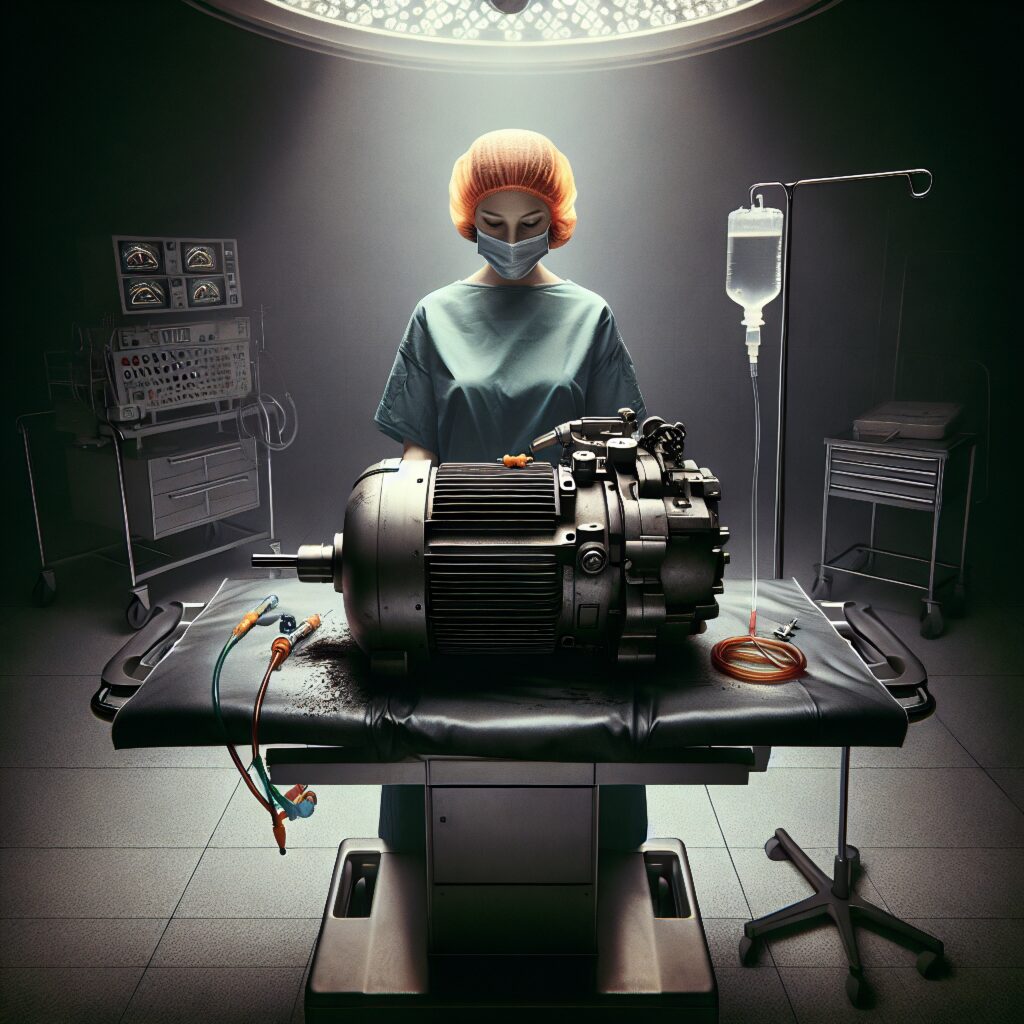AI is Transforming Ophthalmic Care from Diagnostics to Surgery
In modern ophthalmic surgery, precision is everything. Surgeons rely on high-resolution imaging to assess delicate ocular structures, detect abnormalities, and guide procedures with the utmost accuracy. Artificial Intelligence (AI)-enhanced ultrasound technology is revolutionizing this field by providing real-time imaging, automated diagnostics, and improved workflow efficiency. AI-driven ultrasound systems are now being integrated into preoperative planning, intraoperative guidance, and postoperative assessments, offering unmatched accuracy and efficiency.
AI-powered ultrasound plays a crucial role in enhancing diagnostic accuracy, allowing surgeons to analyze ocular structures in real time and detect abnormalities with greater precision than traditional imaging methods. One of its biggest advantages is reducing radiation exposure, as it eliminates the risks associated with CT scans and X-rays, making it a safer alternative for both patients and practitioners. Additionally, AI-enhanced ultrasound provides improved surgical guidance, enabling real-time intraoperative visualization that allows surgeons to navigate delicate procedures with confidence. Perhaps most importantly, AI-driven ultrasound generates automated diagnostic reports instantly, reducing manual workload and giving surgeons more time to focus on patient care.
How AI-Powered Ultrasound Enhances Ophthalmic Surgery
AI-driven ultrasound systems are designed to support ophthalmic surgeons in various procedures, including retinal surgery, cataract removal, glaucoma treatment, and corneal transplants. Some of the key features that make AI-powered ultrasound a game-changer include:
- FDA-Approved AI Algorithms – Enhance real-time tissue differentiation, improving surgical precision.
- High-Frequency Transducers – Specialized probes for detailed ocular imaging, including retinal, corneal, and intraocular assessments.
- Tissue Adaptive Imaging (TAI) – Automatically adjusts imaging parameters to optimize clarity for different tissue types.
- Adaptive Speckle Reduction Imaging (eSRI) – Reduces noise and enhances image sharpness for better visualization of ocular structures.
- Harmonic Imaging – Improves contrast resolution, making it easier to detect vascular abnormalities and retinal detachments.
- Digital Multi-Beam Forming – Enhances frame rates and image resolution, ensuring real-time, high-definition imaging.
- AI-Powered Doppler Analysis – Provides automated blood flow assessments, improving vascular diagnostics during eye surgery.
- Needle Visualization Mode – Enhances accuracy during intraocular injections, biopsies, and minimally invasive procedures.
These AI-driven imaging technologies make ultrasound an indispensable tool for ophthalmic surgeons seeking precision, efficiency, and real-time insights.
Case Studies: AI-Powered Ultrasound in Ophthalmic Surgery
Case Study 1: AI-Enhanced Retinal Surgery
A leading ophthalmic surgery center integrated AI-powered ultrasound into its retinal detachment repair procedures. The AI-driven Doppler analysis allowed surgeons to visualize retinal blood flow patterns in real time, leading to more precise interventions and fewer postoperative complications.
Case Study 2: AI-Guided Cataract Surgery
A hospital’s ophthalmology unit adopted AI-enhanced ultrasound for cataract surgery, where the needle visualization mode provided precise guidance for intraocular lens placement, leading to faster procedures and improved recovery times.
Case Study 3: AI-Optimized Glaucoma Surgery
A glaucoma surgery team implemented AI-powered ultrasound for real-time Doppler imaging during trabeculectomy procedures. The AI-driven blood flow analysis allowed surgeons to assess drainage pathways instantly, reducing the risk of postoperative complications and improving long-term patient outcomes.
Case Study 4: AI-Assisted Corneal Transplant Surgery
An ophthalmic transplant center integrated AI-enhanced ultrasound into its corneal transplant procedures. The AI-powered tissue differentiation allowed surgeons to assess graft viability in real time, leading to higher success rates and improved patient vision restoration.
Case Study 5: AI-Powered Emergency Eye Trauma Surgery
A trauma surgery unit implemented AI-driven ultrasound for rapid assessments of ocular injuries in emergency cases. The real-time AI analysis allowed surgeons to make faster decisions, leading to improved survival rates and reduced complications.
Why AI-Powered Ultrasound is a Game-Changer for Ophthalmic Surgeons
AI-powered ultrasound is revolutionizing ophthalmic surgery, providing AI-enhanced precision, real-time intraoperative guidance, and improved surgical accuracy. With FDA-approved AI algorithms, state-of-the-art imaging technology, and seamless workflow integration, these systems empower surgeons to deliver superior patient care while reducing manual workload and optimizing efficiency. The introduction of AI-powered diagnostics means ophthalmic surgeons can now spend less time interpreting imaging data and more time performing critical surgeries, improving overall patient care.
For more details on AI-powered ophthalmic ultrasound solutions, visit PBC Medical Solutions.



